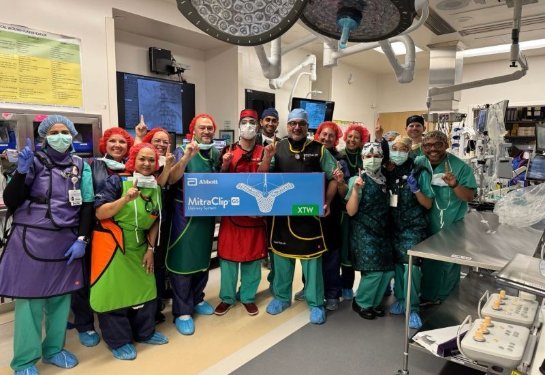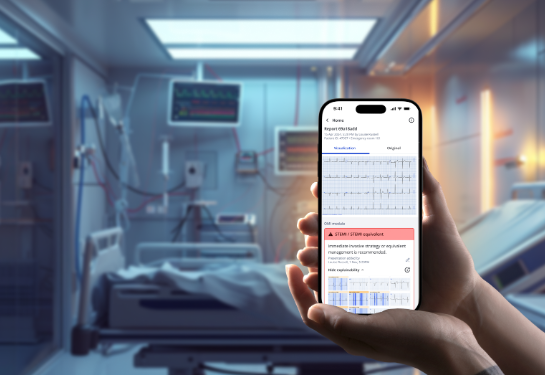Expert Q&A: What you need to know about the new hypertension guidelines
Last month, the American College of Cardiology (ACC) and the American Heart Association (AHA), in collaboration with a broad coalition of professional organizations, released updated hypertension guidelines.
This comprehensive revision of the 2017 guidelines introduces several key changes, including:
- A cardiovascular risk calculator.
- New recommendations for managing hypertension in pregnant women.
- Updated guidance on the use of GLP-1 medications
To better understand the implications of these updates for hypertension treatment, we spoke with Surabhi Atreja, associate professor of cardiology at UC Davis Health and director of the UC Davis Resistant Hypertension Clinic.
What are the most significant changes in the new guidelines compared to the 2017 version?
The key changes in the 2025 hypertension guidelines emphasize early intervention. Patients with Stage 1 hypertension (130 to 139 over 80 to 89 mm Hg) who are at low cardiovascular risk are encouraged to pursue lifestyle changes for three to six months before starting medication. For those with Stage 2 hypertension (140 over 90 mm Hg or higher), immediate treatment with two medications, ideally combined in a single pill, is recommended.
Additional updates include the consideration of GLP-1 medications, such as Ozempic, for overweight patients with hypertension, as well as expanded lab testing to better identify underlying conditions.
Most notably, the guidelines introduce a new tool called PREVENT, to help clinicians estimate a patient’s 10- and 30-year cardiovascular risk. This tool incorporates factors such as age, sex, blood pressure, cholesterol levels, kidney function, and even ZIP code, which serves as a proxy for social determinants of health.
How does PREVENT improve upon previous tools used to assess a patient's cardiovascular risk?
The PREVENT Risk Calculator offers a more accurate and equitable way to assess cardiovascular risk compared to older tools. It draws on data from over 6 million diverse patients and expands the age range to include adults as young as 30. Unlike previous models, PREVENT excludes race as a variable and instead incorporates social determinants of health using ZIP code data. It also includes additional clinical markers such as kidney function and metabolic health and estimates both 10- and 30-year risks for multiple outcomes including heart failure and total cardiovascular disease.
This broader, more personalized approach gives clinicians a better idea of which people with hypertension would benefit most from treatment.
“This broader, more personalized approach gives clinicians a better idea of which people with hypertension would benefit most from treatment.”—Surabhi Atreja
How do the new guidelines address hypertension during pregnancy?
Many of the new recommendations focus on treating high blood pressure during pregnancy and the postpartum period, advising the use of specific medications when patients have Stage 2 hypertension. These changes are based on growing evidence that elevated blood pressure can lead to serious complications, such as preeclampsia, both during pregnancy and after delivery. By promoting tighter blood pressure control during this critical time, the guidelines aim to support better long-term health outcomes for mothers and their babies.
What do the new recommendations say about GLP-1 medications?
GLP-1 medications have grown popular in recent years for their ability to promote weight loss. The new guidelines suggest patients with high blood pressure who are also overweight may want to seek a prescription for a GLP-1.
The guidelines emphasize that these medications should be used alongside lifestyle interventions and that treatment decisions should be personalized based on factors like BMI, cardiovascular risk and access to care.
What are the recommendations when it comes to lifestyle changes?
The updated guidelines place a stronger emphasis on lifestyle changes as a foundational part of managing high blood pressure. Key lifestyle changes include eating healthy, reducing salt, exercising and managing stressors. These personalized interventions are recommended not only to lower blood pressure but also to reduce the risk of heart disease, stroke, kidney disease and cognitive decline.
What role does renal denervation play in the updated guidelines, and which patients might benefit from it?
The 2025 hypertension guidelines officially recognize renal denervation as a treatment option for patients with resistant or uncontrolled high blood pressure. Its inclusion reflects the growing confidence in the safety and effectiveness of renal denervation, which is supported by clinical trials showing sustained blood pressure reductions over several years. UC Davis Medical Center was the first hospital in Northern California to perform a renal denervation procedure.
Patients who may benefit from renal denervation include those whose hypertension remains uncontrolled despite taking multiple medications or patients with high cardiovascular risk who have not responded to lifestyle changes and drug therapy.
How can someone struggling with hypertension schedule a consultation with your clinic?
Your primary care doctor or provider can send a referral to the UC Davis Health Resistant Hypertension Clinic. We offer comprehensive care, including remote blood pressure monitoring, text reminders and detailed investigations of the cause of hypertension. We can also examine if patients are candidates for innovative procedures like renal denervation and renal artery angioplasty.
We’re always happy to see patients from within our health system, but we also welcome patients from outside our network.





